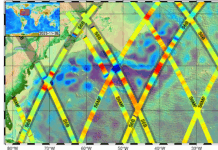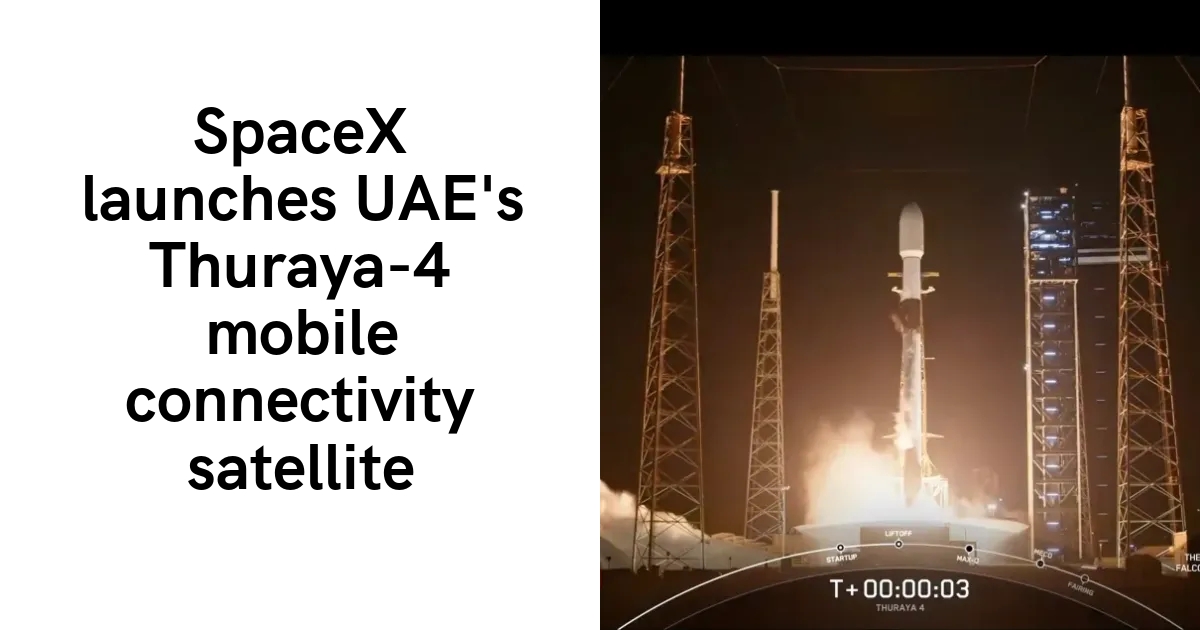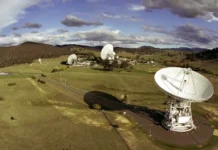On January 3, SpaceX executed a successful launch of the Thuraya-4 satellite, designed to enhance voice and data connectivity, on behalf of Space42, the United Arab Emirates’ newly established space technology company powered by artificial intelligence. This launch represents the first Falcon 9 mission of 2025, with the satellite being deployed into a geostationary transfer orbit following its lift-off at 8:27 p.m. Eastern time from the Cape Canaveral Space Force Station in Florida.
The Thuraya-4 satellite is constructed on the Airbus Eurostar Neo Platform, which is known for its efficiency and advanced technology. This particular satellite is all-electric and comes equipped with a 12-meter L-band antenna. Its primary function is to provide narrowband connectivity, which is a type of data transmission that uses a smaller bandwidth but is highly reliable for mobile device connectivity across vast regions like Europe, Africa, Central Asia, and the Middle East.
Space42 is a product of a strategic merger between Yahsat, a satellite operator from the UAE, and Bayanat, a local artificial intelligence provider. This merger took place in October and aimed to form a robust entity capable of leading advancements in space technology. Yahsat had initially placed an order for the Thuraya-4 satellite back in 2020, with the intent of replacing two older satellites built by Boeing that were already in geostationary orbit. The contract also included an option for a second satellite, intended to replace mobile satellite services over Asia, though this option has not yet been taken up.
Originally, the launch of Thuraya-4 was scheduled for 2023. However, Airbus encountered some unforeseen challenges related to scheduling and cost, which are not uncommon in the complex field of aerospace manufacturing. These issues resulted in a delay, pushing the launch to early 2025. There was a brief moment when the satellite was lined up for a December launch, coinciding with SpaceX’s ambitious plan to complete a total of 148 missions to orbit in that year.
Despite the delay, SpaceX ended 2024 on a high note, having completed 134 launches of its Falcon 9 and Falcon Heavy rockets. This was a significant increase from the 96 launches in 2023 and surpassed the combined efforts of other space agencies around the world. Looking forward, SpaceX’s president and COO, Gwynne Shotwell, has expressed the company’s goal of achieving between 175 to 180 launches in 2025, underscoring their commitment to expanding their capabilities and reach in space.
Ali Al Hashemi, the CEO of Yahsat Space Services, a division under Space42, expressed optimism about the capabilities of Thuraya-4. He mentioned that the satellite would be instrumental in unlocking innovative services powered by AI for their global clientele, although he did not provide further details on what these services would entail.
In a conversation from October, Karim Sabbagh, Space42’s managing director, shared insights into the company’s initial focus areas. The company is concentrating on developing hybrid connectivity solutions and geospatial services, which hold promise for emerging markets. One of the potential applications discussed was autonomous vehicles, which require reliable and wide-reaching connectivity solutions.
Besides the Thuraya-4 satellite, Space42 is actively involved in providing broadband and TV broadcasting services. They operate three separate satellites in geostationary orbit to deliver these services. Airbus is also in the process of constructing two additional satellites for Space42, named Al Yah-4 and Al Yah-5, which SpaceX is contracted to launch in 2027 and 2028, respectively.
Furthermore, Space42 is expanding its horizons with plans to incorporate low Earth orbit (LEO) satellites into their operations. They have ordered two such spacecraft from Airbus as part of a multi-orbit strategy. While specifics about this strategy remain sparse, it indicates Space42’s ambition to leverage the advantages of both geostationary and low Earth orbits to enhance their service offerings.
This launch and the ongoing developments at Space42 highlight the dynamic nature of the space industry, where traditional boundaries are being pushed by innovations in technology and strategic partnerships. The integration of AI into space technologies, as seen with Space42, sets a precedent for future advancements and applications that can significantly impact various sectors, including communications, transportation, and data analytics.
In conclusion, the successful deployment of the Thuraya-4 satellite by SpaceX for Space42 represents a significant milestone not just for the involved parties but also for the broader space exploration and technology community. It exemplifies the collaborative efforts and technological advancements that are driving the industry forward, making space more accessible and functional for a variety of applications that can benefit societies globally. As Space42 continues to develop and deploy more satellites, it will be interesting to observe the new possibilities that emerge from their innovative approach to space technology.
For more Information, Refer to this article.


































